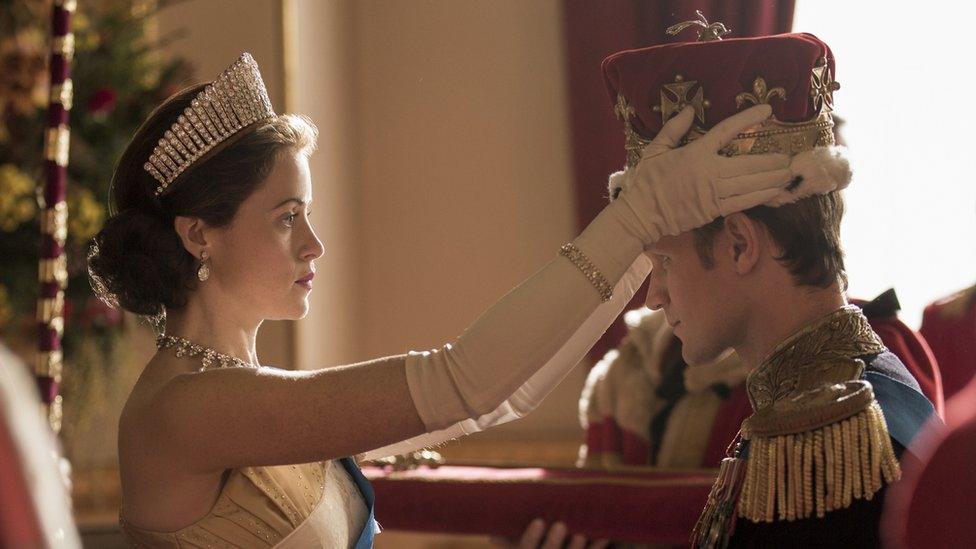Scots watch more broadcast TV than the rest of the UK
- Published

Strictly Come Dancing was the most-watched live TV programme. Actor Joe McFadden went on to win the show.
Scots are watching more broadcast TV than the rest of the UK, according to broadcast regulator Ofcom.
Last year Scots spent an average of three hours and 46 minutes tuning in to programmes as they were broadcast, 24 minutes more than the UK average.
However, viewing is moving online, with BBC iPlayer the most popular streaming service.
The most-watched programme of 2017 was the Strictly Come Dancing semi-final in December.
Ofcom has researched the nation's viewing habits for its first Media Nations: Scotland 2018 report,, external published on Wednesday.
It found that people in Scotland watch more television than viewers in the rest of the UK.

Younger people are watching YouTube regularly, following vloggers such as Logan Paul
But despite Scots spending the most time watching TV, viewing time is on the decline.
In 2017, Scottish viewers spent nine minutes less (-3.8%) watching broadcast television on their TVs than in 2016, and 46 minutes less (-16%) compared with 2010.
The decline in broadcast TV viewing is even steeper among children.
In 2017, youngsters aged four to 15 watched one hour and 27 minutes of broadcast TV each day, down from two hours and 28 minutes in 2010 (-41%).
Similarly, 16 to 34-year-olds watched two hours and 16 minutes of broadcast TV per day in 2017, compared with three hours and 25 minutes in 2010 (-34%).
This means that over 55-year-olds in Scotland watched almost four times as much broadcast television per day than children in 2017.

BBC iPlayer was the most used streaming service, followed by Netflix and the STV Player
Although people in Scotland are watching less broadcast television, they are spending more time watching other things on their TV set.
Daily viewing of non-broadcast content, such as YouTube and subscription on-demand services including Netflix and Amazon Prime Video, increased by three minutes (8%) in 2017, to 40 minutes.
BBC iPlayer was the most popular online streaming service in Scotland, with 47% claiming to have ever used it, followed by Netflix (39%) and the STV Player (31%).
The use of Netflix, in particular, is heavily skewed towards younger viewers in Scotland, with 31% of adults in Scotland claiming to use the service at least once a week. This rises to 60% among 16-24s and 53% among 25-34s, but drops to just 8% of the 65+ age group.
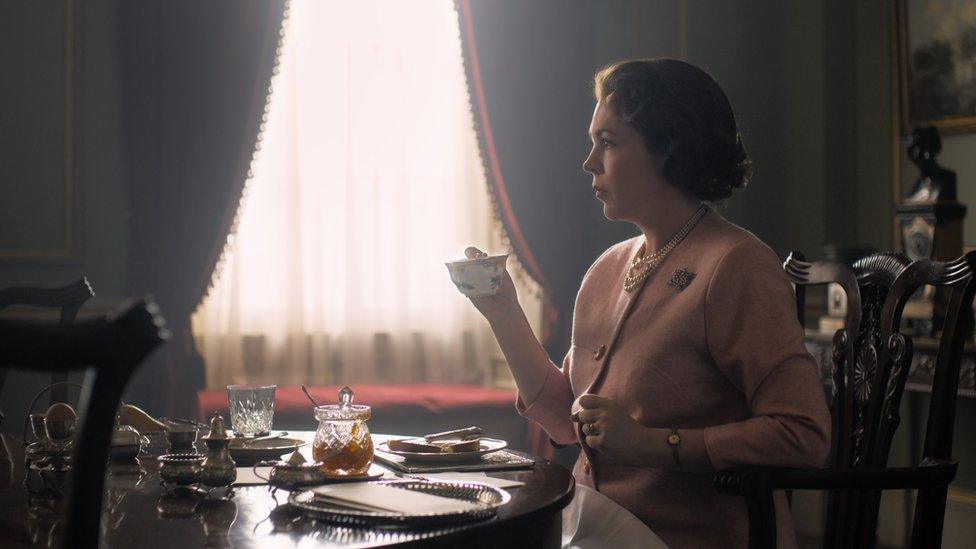
Olivia Colman takes over the role of Elizabeth II in Netflix hit The Crown
Glenn Preston, Ofcom's Scotland director, said the research "shows that the way people in Scotland watch TV is changing rapidly".
"Although viewers in Scotland watch more TV than in the rest of the UK, they are spending less time watching traditional broadcast TV and are turning to online streaming services, attracted by their exclusive programmes and vast libraries of classic shows.
"Broadcasters in Scotland must confront the challenges posed by both online streaming companies and the changing way people are watching television, to ensure they continue to make great shows to appeal to Scottish viewers in the digital age."
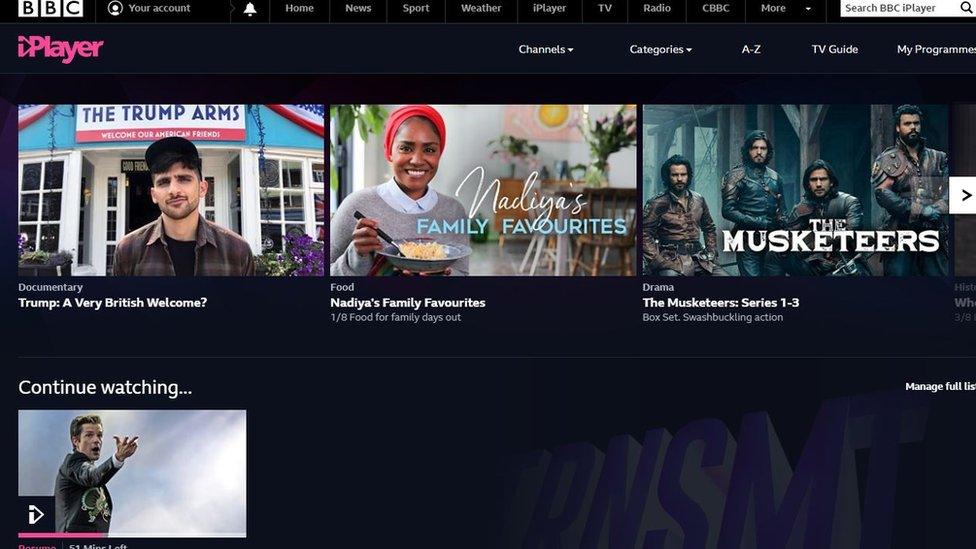
The BBC iPlayer was Scotland's favourite streaming service in 2017
The report found that in 2017 the BBC, STV and ITV spent a combined £53.9m on first-run, UK-made programmes for viewers in Scotland, an 8% real-terms decrease year-on-year.
It said this decline was the result of lower spending by the BBC which reduced spend by 10% year on year while STV/ITV spending remained broadly stable.
The semi-final of Strictly Come Dancing was the most-viewed broadcast programme on television across Scotland in 2017, with an audience of nearly 1.2 million, followed by Blue Planet II which attracted almost 1.1 million viewers.

Blue Planet II was the second most-viewed programme last year
The report also examined trends in the radio and audio sectors and found the amount of time people spent listening to digital radio has continued to grow, reaching 47% of all listening hours by the start of 2018, up from 30% in 2013.
Two-thirds of people in Scotland (66%) owned a DAB radio at the start of 2018, above the UK average of 64%.
Almost nine in ten (88%) of adults listen to the radio every week.
On average, adults in Scotland spend 14 hours and four minutes each week listening to any type of audio and 71% of this was to live radio, the report found.
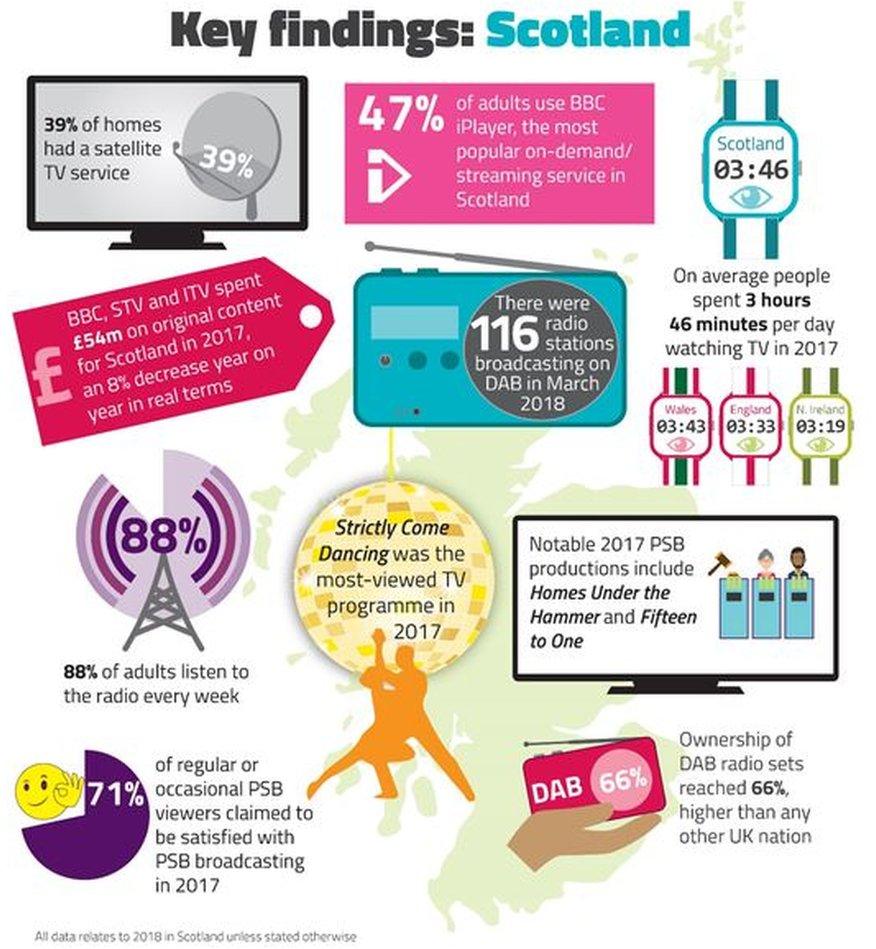
The key findings of Ofcom's Media Nations: Scotland 2018 report
- Published18 July 2018
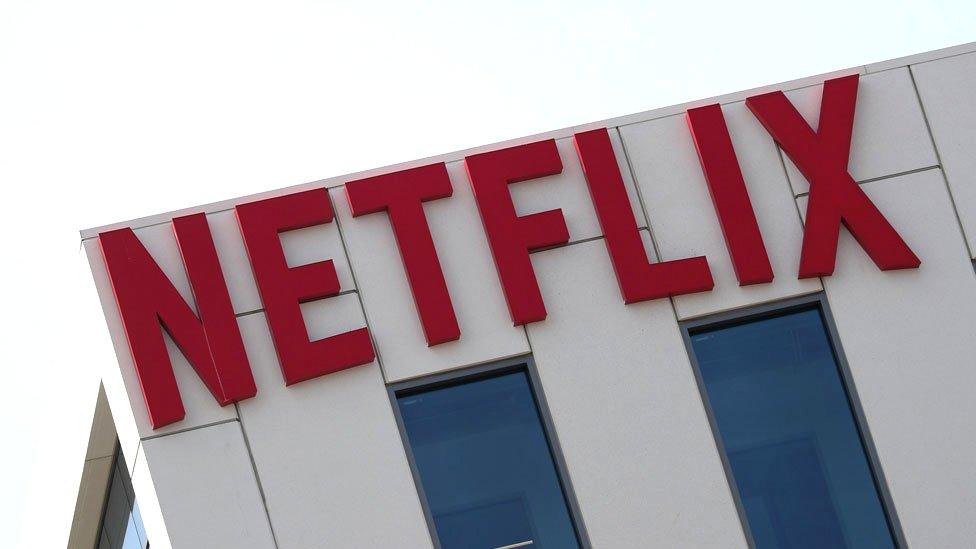
- Published16 July 2018
